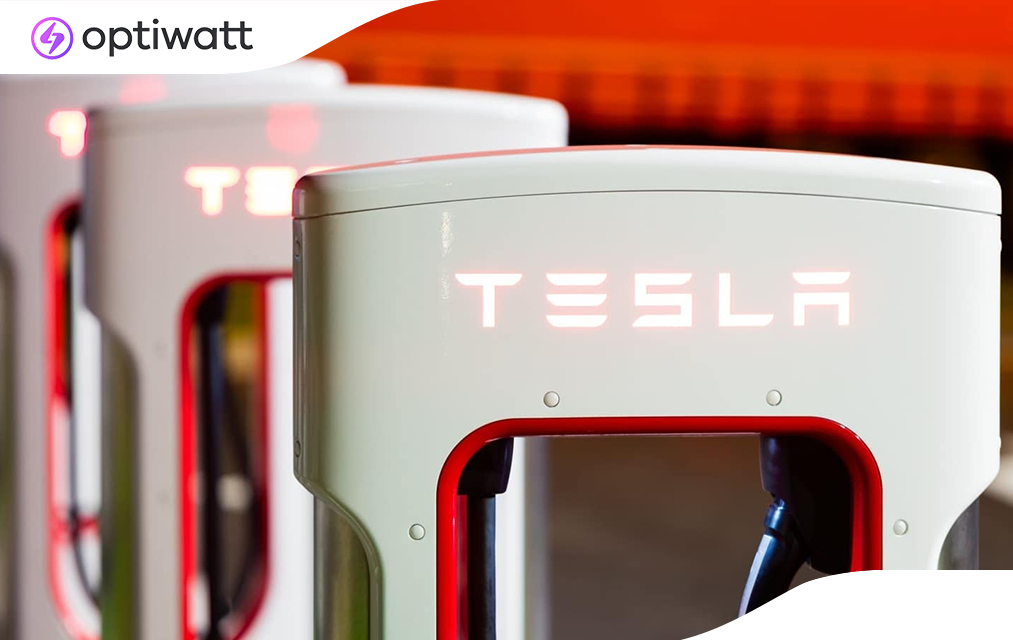How Long Does It Take To Supercharge a Tesla?


The V3 Tesla Superchargers are currently the fastest EV chargers in the world. The amount of time it takes for a Supercharger to add miles into your car is equivalent to the time it would take for you to drink a cup of coffee.
Introducing V3 Superchargers into the vast Supercharger network of Tesla can solve one of the main challenges electric vehicles face regarding adoption.
All of Tesla’s models have about 335 miles of average range per charge, which is incredible. If you are traveling long distances, you will find Supercharging stations most helpful, as they can charge your car extremely fast so you can get to your destination in a timely fashion.
Despite their highly fast rate of charge and convenience, many people will advise you against the use of Superchargers. This is due to problems when you charge your Tesla this fast. In this article, we are going to discuss Tesla Supercharging issues and how long it take to Supercharge a Tesla.
Tesla Supercharging Issues
The problem with charging your Tesla so fast is the configuration of its lithium-ion battery. Like all batteries in an electrical gadget, Tesla batteries also consist of three main components, an anode, a cathode and a separator which is typically an electrolyte.
Charging and discharging a battery involves sending the flow of electrons from the anode to the cathode inside a battery. This chemical process powers the motor in the Tesla to turn the wheels, essentially allowing you to thrust the car forward.
Like all chemical reactions, the one that occurs inside the battery creates plenty of heat, which can cause problems with the electrolyte. The problems are usually due to a buildup that decreases the capacity of a Tesla battery. In other words, over time, chemical reactions will result in less space for energy storage inside the battery.
People will more commonly refer to this phenomenon as battery degradation. You will commonly experience this with your electronic gadgets such as mobile phones and laptops. Nonetheless, Tesla’s battery formulations make them much healthier and more resilient than other lithium-ion batteries in electronic gadgets and other electric vehicles.
Despite all that, a Supercharger's rate of charge compared to a slower-charging destination charger can increase the speed of degradation in a Tesla battery, causing your car to lose range per charge over time.
Supercharger vs. Destination Chargers
Keep in mind that Superchargers are not the only Tesla-branded charging options around. There is also a charging option referred to as a destination charger, and they are much more in number than Superchargers.
You can normally find destination chargers at hotel parking lots, spas, colleges and other random locations. Hence, while you may be tempted to find the nearest Supercharging station, remember there are many more destination chargers around.
Destination chargers are great, but they are not as fast as Superchargers. Nevertheless, they can help you charge a decent rate of about 22kW. Their purpose fulfills Tesla’s aim to expand the company’s charging station network further out from the main motorway. So, how long does it take to Supercharge a Tesla?

How Long Does It Take to Supercharge a Tesla?
Tesla Supercharging is significantly faster than any other charging technology available today, providing up to 170 miles of range in as little as 30 minutes. However, the amount of time it takes to charge will vary depending on a few factors, such as:
- The type of charger being used
- The age and condition of the battery
- The outside temperature
- How much charge is already in the battery
Generally speaking, it will take longer to charge a Tesla from 0% to 100% than it would charge from 50% to 80%. However, the exact time will vary depending on the factors mentioned above.
The charging stations on the main motorway consist of Superchargers, which in comparison, charge at a much higher charge of 120 to 150 kW, which means that they can charge your car faster in a shorter amount of time.
The Optiwatt app makes charging your Tesla easier than ever. With just a few clicks, you can see how long it will take to charge your vehicle at different charging speeds. You can also see what the expected costs will be and get tips on how to optimize your charging experience.
Which One is Better?
According to experts, a Tesla owner should only use the Supercharger when it is absolutely necessary because the excessive use of Superchargers may harm the battery. The high rate of charge can also cause overheating problems in the battery.
The Verdict
If you are short on time and losing battery life, then there is no harm in using a Supercharger. However, if your available time allows you to choose between the Supercharger and a destination charger, it is best to charge using the lower voltage destination charger. This will help maintain your battery’s health.










